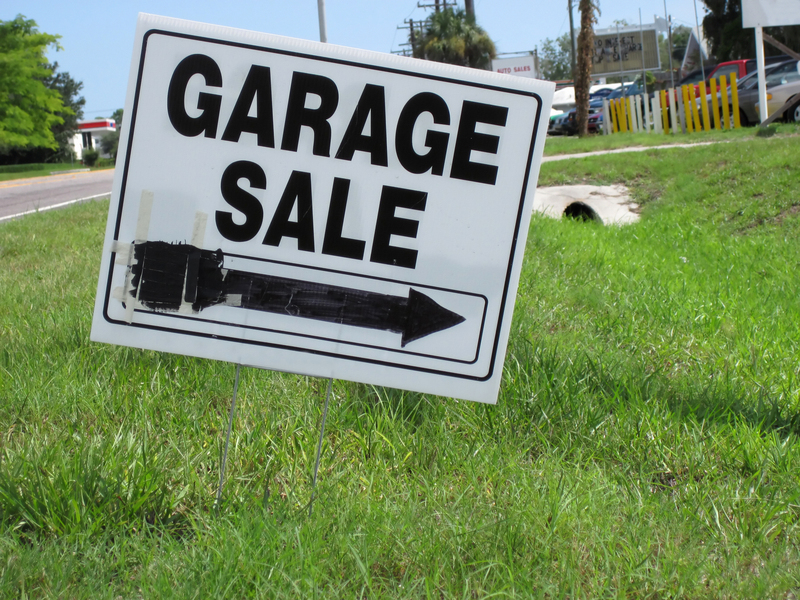The Do's and Don'ts of Disposing PPE Waste Responsibly
Personal Protective Equipment (PPE) has become essential in our daily routines, especially in healthcare, industrial workplaces, and even in public spaces following the recent global health events. While using PPE like masks, gloves, gowns, and face shields protects us from contagious viruses and harmful substances, improper disposal of PPE waste is a growing environmental concern. If handled incorrectly, PPE waste can pose threats to sanitation workers, wildlife, and the environment, as well as potentially aiding the spread of pathogens.
This comprehensive guide covers the do's and don'ts of disposing PPE waste responsibly to help you minimize your ecological footprint while keeping communities safe. Discover sustainable practices, legal mandates, and everyday actions you can take to ensure effective and lawful PPE waste management.
The Importance of Responsible PPE Waste Disposal
With billions of PPE items used globally every month, the volume of discarded single-use masks, gloves, and other protective gear is staggering. Responsible PPE waste disposal is vital for several reasons:
- Reduces transmission risk: Used PPE can be contaminated with pathogens and must be handled and disposed of carefully to prevent infection spread.
- Protects sanitation workers: Incorrectly disposed PPE can place a burden on refuse collectors and waste center staff, risking their health.
- Protects wildlife: Animals can mistake discarded PPE for food or become entangled, leading to injury or death.
- Environmental safety: Most PPE is made of non-recyclable plastics that linger in landfills for centuries, and can easily make their way to rivers and oceans.
- Compliance: Adhering to legal regulations and institutional policies helps avoid fines and contributes to broader public health efforts.

PPE Waste: What Does It Include?
Let's first clarify what items are considered PPE waste:
- Face masks (surgical, N95, FFP2, cloth masks)
- Disposable gloves (latex, nitrile, vinyl)
- Gowns (disposable aprons or coveralls)
- Face shields and goggles (if single-use or no longer usable)
- Protective caps and shoe covers
All these items--once used--must be treated as contaminated unless proven otherwise. This approach ensures safe PPE waste disposal for everyone involved.
The Do's of Disposing PPE Waste Responsibly
To help protect public health and the environment, follow these essential do's when disposing of PPE waste responsibly:
1. Use the Right Waste Bins for PPE Disposal
Designate specific bins for PPE waste: Ideally, assign labeled bins in workplaces, healthcare facilities, and public areas. In homes, use a dedicated, lined trash can for all used PPE.
- In healthcare settings: Use red or yellow bins marked for infectious (biohazard) waste.
- In other workplaces or public areas: Place bins clearly labeled "PPE Waste Only" in accessible yet discrete locations.
- For households: Use double-layered bags or bins with secured lids to separate PPE from regular waste.
2. Seal and Secure PPE Waste Bags
After collecting PPE waste, always tie bags securely before disposal. This limits the risk of waste spillage and reduces contact opportunities for sanitation staff. For added safety, consider double-bagging to act as a secondary barrier, especially for visibly soiled or contaminated items.
3. Wash Hands Thoroughly After Handling PPE Waste
Always perform hand hygiene after touching or disposing of used PPE--this helps protect you and limits the spread of germs.
4. Follow Local Guidelines and Regulations
Disposal rules can vary by country, state, and municipality. Common mandates include segregating PPE waste from recyclables and general waste, and using designated collection services for large amounts of hazardous waste. Always check and comply with your local waste management authority's guidance.
5. Educate Others on Responsible PPE Waste Disposal
Consider developing signage or providing information to family, coworkers, or the public. Awareness campaigns help people follow best practices and reinforce accountability.
6. Explore PPE Recycling Programs Where Available
Some organizations now run collection programs for certain types of PPE waste, especially in healthcare or laboratory settings. These initiatives recycle plastic from masks or gloves, turning them into building materials or energy sources. Participate in certified recycling schemes whenever feasible.
7. Minimize Use of Disposable PPE When Possible
Opt for reusable PPE items, such as cloth masks or washable gowns, if safe and permissible. This reduces overall waste and environmental load.
The Don'ts of Disposing PPE Waste
Equally important as following what to do is knowing what to avoid when disposing of PPE waste properly. Here are the crucial don'ts:
1. Don't Throw PPE Waste into Recycling Bins
PPE is not recyclable via standard curbside programs. These items contaminate recycling streams, posing a hazard to recycling facility workers and leading to the rejection of large batches of otherwise clean recyclables.
2. Don't Litter PPE in Public Spaces
Discarded masks and gloves frequently end up on streets, parks, and beaches, polluting the environment and presenting risks to wildlife and sanitation workers. Never drop PPE waste outside; always use a designated bin.
3. Don't Flush PPE Down Toilets or Drains
Never flush masks, gloves, or wipes: These materials block plumbing, damage wastewater treatment equipment, and eventually end up contaminating rivers and oceans.
4. Don't Mix PPE Waste with Compost or Yard Waste
Compostable bins are meant only for organic materials. PPE contains plastics and synthetic fibers which do not break down and can introduce toxins into soils and plants if not removed.
5. Don't Burn PPE Waste at Home
Burning masks or gloves in home fireplaces or gardens releases harmful toxins and microplastics into the air. PPE should only be incinerated by certified waste management facilities with proper emission controls.
6. Don't Attempt to Reuse Disposable PPE
Single-use PPE is designed for limited or one-time use only. Attempting to wash or reuse disposable items compromises their effectiveness and can even increase the risk of contamination.
7. Don't Ignore Specialized PPE Waste Pickup Services
Large workplaces or healthcare providers often have contracted services to handle hazardous/medical waste. Do not dispose of large quantities of PPE in regular trash; utilize proper hazardous waste pickup services for larger batches.
Environmental Impact of PPE Waste: A Closer Look
During the COVID-19 pandemic, the global usage of face masks alone was estimated at 129 billion per month--that's around 3 million per minute! Since these masks are largely made of polypropylene plastic, improper disposal leads to massive pollution in landfills and oceans. Scientists have found masks wrapped around birds and marine mammals, and microplastic fibers from PPE embedded in soils and water bodies.
The responsible management of PPE waste is therefore a matter of environmental urgency as much as public health.
Best Practices for PPE Waste Management in Workplaces and Institutions
- Train employees on correct disposal procedures and refresh knowledge regularly.
- Increase signage in high-use areas: visual cues prompt action and minimize mistakes.
- Coordinate with licensed waste disposal partners for regular, traceable collection of hazardous PPE waste.
- Maintain comprehensive records of PPE consumption and disposal for compliance audits.
- Promote alternatives wherever possible (reusable/washable PPE or safer work procedures to minimize PPE need).
What About Reusable PPE?
Reusable PPE (such as fabric masks, goggles, or washable gowns) can significantly reduce the amount of waste. However, cleaning and disinfecting these items between uses is crucial to prevent contamination. Always follow the manufacturer's instructions or institutional policies for laundering and disinfecting reusable PPE.
- Wash cloth masks after every use.
- Store used reusable PPE separately until laundering/disinfection.
- Inspect for damage before reuse and discard if compromised.
Innovations and Future Directions for PPE Waste
The demand for sustainable PPE disposal is transforming industry innovation:
- Biodegradable PPE: Some manufacturers now produce masks and gloves from plant-based or compostable materials, which decompose faster in landfills and minimize ecological impact.
- PPE Recycling Initiatives: Programs are emerging that can recycle used PPE into construction materials, plastic pellets, or energy via specialized processing.
- Circular Economy Models: Encouraging collection and recycling for industrial PPE, with tracking systems to ensure safe reprocessing.
- Educational Campaigns: Governments, companies, and NGOs are working to boost public awareness of responsible PPE waste management.

Summary: Key Takeaways for Disposing PPE Waste Responsibly
- Always use the proper bin for PPE waste; never throw used PPE into recycling or compost bins.
- Seal PPE waste in bags before disposal and follow institutional protocols.
- Do not litter, flush, or burn PPE at home.
- Wash your hands after handling or disposing of PPE items.
- Stay informed about local PPE waste management guidelines.
- Promote and participate in recycling or return-to-manufacturer schemes if available.
- Consider reusables wherever safe and possible.
Conclusion
As the world continues to rely on personal protective equipment to safeguard public health, it is crucial that each of us commits to *disposal best practices*. The risks posed by improperly discarded masks and gloves go far beyond litter--they contaminate our environment, harm wildlife, and put people in harm's way.
By following the do's and don'ts outlined in this article, you can contribute to safer communities and a cleaner planet while staying protected.
Together, through knowledge and action, we can tackle the emerging challenge of PPE waste and uphold our responsibility to the environment and each other.